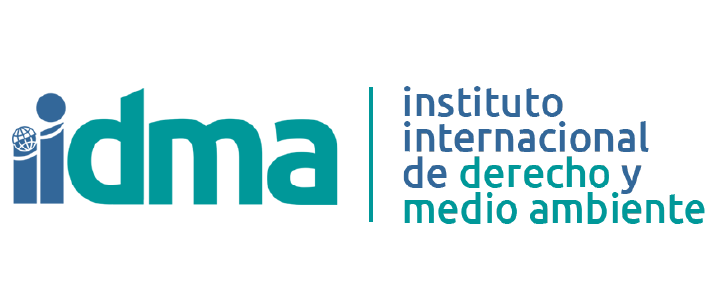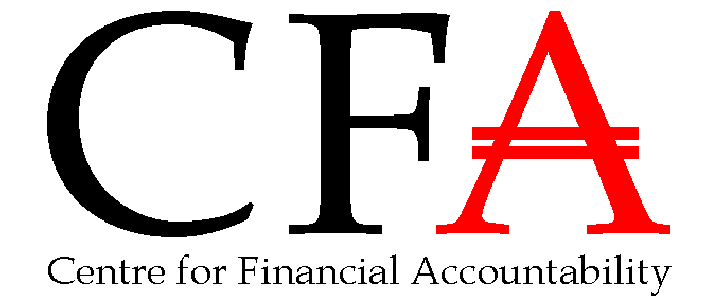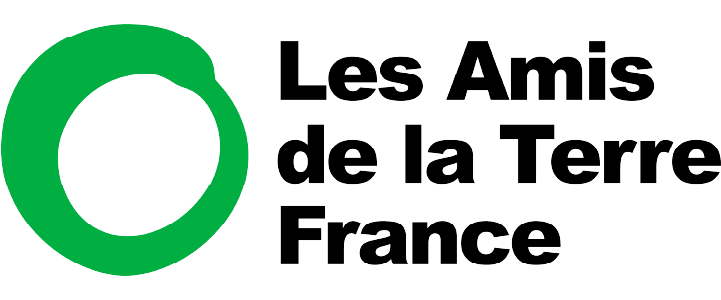Frequently Asked Questions
Coal policies: how to adopt robust commitments?
Any delay in phasing out coal would jeopardize meeting the 1.5°C target while continuing to pose very serious health risks for the populations concerned. According to the International Energy Agency, air pollution from outdoor sources caused more than four million premature deaths in 2021, 85% of which were in emerging markets and developing economies, mainly in Asia (Coal in Net Zero Transitions, 2022).
Adding new coal projects (thermal or metallurgical coal mines, coal plants, or coal-related infrastructure) is thus strictly incompatible with a 1.5°C scenario, in addition to the additional health risks this will entail.
Nevertheless, there continue to be numerous expansion plans within the coal sector:
- According to Global Energy Monitor’s Coal Plant Tracker, the total coal power capacity under development exceeds 550 GW. Under current projections, the global coal power fleet could reach 2,240 GW by 2030, while a capacity consistent with a 1.5°C scenario should not exceed 1,470 GW by 2030 (Boom and Bust Coal, Global Energy Monitor et al., April 2023). An expansion plan can refer to both a new project (announced, pre-/permitted, under construction), or expansion of an existing project.
- These projects are carried out by numerous companies. All forms of investment and other financial support for such companies should be prohibited to prevent them from pursuing their expansion plans. In 2023, the Global Coal Exit List developed by Urgewald included 577 companies with expansion plans in the thermal coal sector.
Most importantly, financing subsidiaries belonging to corporate groups with coal assets and/or coal expansion plans must also be covered by sector policies.
When it comes to banks’ coal sector policies, many only restrict project financing and do not address corporate financing. Yet, fossil fuel companies tend mostly to raise finance at the corporate level (lending and underwriting with no specific use of proceeds): according to the Banking on Climate Chaos 2023 report, project financing accounted for only 4% of the total financing of fossil fuel companies between 2016 and 2022.
This is why it is an absolute necessity to adopt coal sector commitments targeting both project and corporate finance.
A robust phase-out strategy for financial institutions involves phasing out all types of exposure in thermal coal mining and coal power by 2040, with an interim target of 2030 for Europe/OECD. Furthermore, additional commitments must be made immediately, such as excluding all companies with coal expansion plans.
In the near term (gradual escalation between 2024 and 2026), companies without exit plans aligned with the above-mentioned deadlines and lacking a detailed asset-by-asset closure plan should progressively be excluded. Other criteria resulting in progressive exclusion include planning to convert coal plants to gas and/or biomass, intending to sell (rather than closing) the assets, and not planning a sustainable transition plan for workers, local communities and the environment.
Financial institutions can be tempted to exempt some of their activities from their coal sector policy. Reclaim Finance is penalizing players who do so.
For each type of financial institution, Reclaim Finance shares detailed recommendations.
For banks:
Click to read more
A policy should apply to all lending activities (notably including term loans, project finance, revolving credit facilities, bridge-loans, etc.). It should also apply to underwriting and structuring activities (notably including bond and share issuances). It also needs to apply to advisory services for bond issues or syndicated loans, M&A advise or index funds management. A broader set of recommendations is available here.
For re/insurers:
Click to read more
A policy should apply to Property Lines (notably including but not limited to Construction and Erection All Risks), casualty lines (including but not limited to liability insurance) and surety bonds. For insurers, it should apply to single-site, standalone and package insurance. For reinsurers, it should also apply to facultative and treaty reinsurance. A broader set of recommendations is available here.
For investors (asset managers, pension funds, etc.):
Click to read more
A policy should apply to all assets under management, including passive funds, dedicated funds and third-party mandates. For mandates, the coal policy shall apply by default, with an opt-out option for clients (clients who do not want the policy to apply to their investments must indicate this to the asset manager), preferable to an opt-in option. For passive funds, investors should not launch any new index funds that would not be able to meet the criteria of the climate policy. A broader set of recommendations is available here.
It can prove very difficult to identify which companies have coal expansion plans, or what the coal share of revenues or power generation is for a given company. Urgewald’s Global Coal Exit List provides an exhaustive set of data for over 1,400 companies (Group-level) and 1,900 of their subsidiaries active along the entire thermal coal value chain. It notably identifies companies with thermal coal mining, power or infrastructure expansion plans, along with relative and absolute threshold for companies most exposed to the coal industry. Reclaim Finance recommends the use of the Global Coal Exit List, which is updated each year, to implement a coal policy. For additional information about this database, you can contact them via email at info@urgewald.org.
Despite strong initial commitments or exclusion thresholds, loopholes and exceptions in a coal sector policy can remove all substance from a policy.
Here are some of the most common, worrying weaknesses seen in policies:
- Limited definition of the coal value chain: Some policies only apply to specific segments of the coal value chain. For instance, BlackRock, the world’s largest investor, has set an exclusion threshold only for thermal coal mining companies, and not coal power companies.
- Selective application of the policy: Certain policies may not cover all assets for investors, perhaps only applying to ESG funds. In the case of banks, policies may apply solely to lending activities and not underwriting or advisory services. For example, DZ Bank excludes some thermal coal companies, but this exclusion only applies to lending activities.
- Weak or undefined transition plans: In some cases, financial institutions might not exclude companies if the latter have adopted some vague, undefined transition plans. UBS, for instance, allows financing for companies with a “transition strategy that aligns with the goals of the Paris Agreement” without sharing further details on what a transition strategy consists of. A transition plan should be aligned with the coal phase-out strategy introduced above (see also Reclaim Finance and Urgwald’s briefing on How to exit coal?).
- New client exemptions: Some policies only exclude new clients, leaving existing customers unaffected by the policy’s provisions. This approach has been observed in banks like BBVA and Commerzbank.
- Financial subsidiaries oversight: Some policies fail to cover financial subsidiaries, which are essential components of numerous thermal coal players strategies to secure financing. The Global Coal Exit List provides data to help identify these financial subsidiaries.
- Not excluding financing to a corporate group with subsidiaries engaged in coal expansion: banks such as BNP Paribas and HSBC exclude financing to specific coal entities, but allow financing at group-level. This seriously undermines the exclusion policy, as the group could use such financing to support its subsidiaries with thermal coal expansion plans.
Furthermore, many policies restrict financing for thermal coal but do not address metallurgical coal. This is a key missing aspect, rather than a loophole, but a widespread issue found in almost all coal-related policies.
An exception may be made for dedicated funding or subsidiaries dedicated to the energy transition (e.g., the deployment of renewable energy). Dedicated funding (for example via the use of proceeds bonds) must be explicitly earmarked and must not be used for other activities.
Green bonds emitted by companies with coal expansion plans should never be tolerated. For companies emitting green bonds, active in the coal sector but with no expansion plans, financing can occur if the issuer’s definition of green is rigorously verified. A Second Party Opinion on the issuer’s framework alone does not guarantee the sustainable attributes of these debt instruments. It is recommended to have a public framework that clearly defines the projects that may be financed and to verify the compatibility of the overall strategy of the issuer with such commitments.
The tracker and its methodology
Policies are assessed based on five criteria, which you can find on the Methodology page. This page also explains how financial institutions were chosen to be put in the Coal Policy Tracker.
The Tracker uses information from publicly available documents published by financial institutions (sector policies, press releases, ESG or Annual Reports, etc.) to assess their coal commitments. Press articles or private information are not taken into consideration.
In any case, all financial institutions are contacted and informed about the methodology before being added to the tracker. The last round of contact with financial institutions took place in September 2023. When necessary, Reclaim Finance may contact a financial institution for clarification questions.
The Coal Policy Tracker is updated on a continuous basis, through monitoring and engagement with financial institutions. If you come across any errors or omissions, please don’t hesitate to contact us
The primary focus of the Coal Policy Tracker is on exclusion commitments, especially at the corporate level, for companies with thermal and metallurgical coal expansion plans or with high exposure to thermal coal.
However, engagement is encouraged and assessed within the ‘phase-out’ criteria for thermal coal companies that are not excluded immediately.
Financial institutions should engage these thermal coal companies so that the latter adopt robust coal phase-out plans, by 2030 in Europe/OECD countries, and 2040 worldwide. These phase-out plans should contain asset-by-asset closure plans (assets need to be closed, and not sold) and a commitment not to convert existing coal plants to gas or biomass. The closure of these assets must be accompanied with just transition plans, and all workers and obligations funded and implemented. Eventually, if these criteria are not respected, the coal company should be excluded.
Understanding the basics of the Coal Policy Tracker
Coal remains a significant barrier to achieving the international goal of limiting global warming to 1.5°C above pre-industrial levels. To tackle this challenge, it is essential to cut off financing to the sector. This can be achieved through financial institutions adopting — and applying — robust exclusion and engagement policies . The Coal Policy Tracker analyzes and assesses global financial institutions’ commitments to restrict coal financing.
According to the International Energy Agency, global coal consumption hit an all-time high in 2022, surpassing eight billion tonnes and eclipsing the previous record set in 2013.
Besides, while many financial institutions have committed to restricting financing for thermal coal (used in power plants) projects and companies and have planned a phase-out by 2030/2040:
- Many financial institutions continue to support the thermal coal sector:
- Investments from asset managers, pension funds and other types of investors in the coal sector remain substantial, amounting to US$1.03 trillion as of January 2023 (Investing In Climate Chaos, Urgewald).
- Financing for the coal sector also remains significant. In 2022 alone, US$42.76 billion were allocated to the top 30 coal power companies and the top 30 coal mining companies by the world’s 60 largest banks (Banking On Climate Chaos, April 2023)
- Only a handful of players are restricting financing for metallurgical coal used by the steel industry.
The Coal Policy Tracker assesses commitments that restrict financing to the entire coal value chain, notably covering projects and companies related to exploration and mining, transport and logistics, both for thermal and metallurgical coal, power and heat generation, or coal-to-chemicals. Diversified conglomerates, mining companies, utilities (producing electricity for the electrical grid), and other industrial players that own captive coal projects are considered. All thermal coal companies can be found in Urgewald’s Global Coal Exit List.
The steel industry accounts for around 7% of global greenhouse gas (GHG) emissions and 11% of global CO2 emissions. This is mostly due to the use of metallurgical coal in blast furnaces. To decarbonize the steel industry, financial institutions must urgently restrict financing for metallurgical coal expansion.
Metallurgical coal mining itself – like thermal coal mining – is also responsible for GHG emissions and negative impacts on local communities.



























